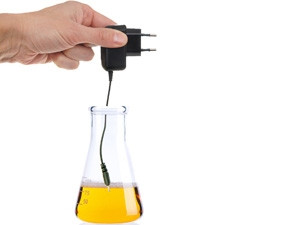
Researchers from the University of Bristol and Bristol Robotics Laboratory, in south-west England, have discovered a way to use urine to charge a phone with enough energy to send SMSes and surf the Internet.
The charging method is, however, not streamlined for domestic use yet.
Engineer Ioannis Ieropoulos explains bacteria was grown on carbon fibre anodes and placed inside ceramic cylinders. The bacteria broke down chemicals in urine passed through the cylinders, building up a small amount of electrical charge, which was stored on a capacitor.
The microbial fuel power stack (MFC) generates enough power to enable SMS messaging, Web browsing and to make a brief phone call, says Ieropoulos.
In an interview with AFP, Ieropoulos said the beauty of this fuel source is that you are not relying on the erratic nature of the wind or the sun, but actually reusing waste to create energy. "One product that we can be sure of an unending supply is our own urine."
He says now that the method has been confirmed to be working, the research team will aim to develop and refine the process to enable MFCs to fully charge a battery. He explained their aim is to have something that can be carried around easily and will eventually be used to power domestic devices.
Unconventional charging
While this is the first time the power of urine has been harnessed to charge a mobile phone, researchers are continually looking at alternative sources for powering electric devices.
KTH Royal Institute of Technology, in Stockholm, recently developed the MyFC PowerTrekk charger that uses ordinary water to charge mobile devices. The charger is based on micro fuel cell technology and can be powered by fresh or sea water.
Electrical engineers have also discovered a way to turn sound into electricity, essentially allowing users to charge their phones by simply speaking into the handset. The design developed at the institute of nanotechnology at Sungkyunkwan University, in Seoul, South Korea, uses tiny strands of zinc oxide sandwiched between two electrodes. A sound pad on the phone absorbs the sound waves, causing the tiny zinc oxide wires to compress and release. This movement generates an electrical current that can then be used to charge a battery.
According to recent reports, users can now also charge their phone using their own body heat. Vodafone has reportedly developed a thermoelectric material that is small enough to be stitched into clothing. Heat from the body is absorbed by the material and converted into voltage that's able to charge an electronic device.
American researchers at Epiphany Labs have even developed a coaster that uses the power of hot and cold drinks to power up a phone. The coaster, called the One Puck, has two sides - one for hot and one for cold - and reportedly works by turning heat disparities into energy.
Share